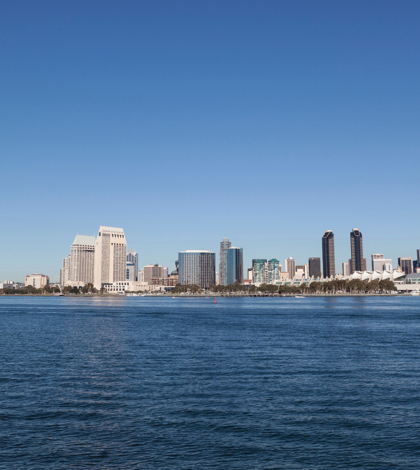The organization’s data implies that the drought may be impacting inland water quality and that trash in San Diego County’s watershed remains a serious problem. Although rainfall for the year to date is nearer to normal than recent years, San Diego remains in an extreme drought. Brett Albright, meteorologist with the National Weather Service, reported 7.85 inches at Lindbergh Field, compared to an average of 10.01 inches.
“Our inland waters empty to the ocean. These inland water quality problems directly impact the water quality of our beaches, too, making them less safe to swim and fish,” says San Diego Coastkeeper (SDC) Lab Coordinator Meredith Meyers. The non-profit SDC works to protect and restore San Diego’s fishable, swimmable and drinkable water.
Over three quarters of SDC water levels, collected regularly by volunteers from their nine watersheds, contained unsafe levels of fecal indicator bacteria. Fecal indicator bacteria are used to predict the presence of pathogens that cause health issues like staph infections, earaches, and eye infections. Inland waters carry these pathogens to the ocean, putting both swimmers and coastal fish populations at risk.
The organization uses a suite of indicators to calculate an overall 2015 Water Quality Score for each of the nine San Diego County watersheds that it monitors. The scores indicate:
San Luis Rey – 80 – Fair
Carlsbad – 80 – Fair
San Dieguito – 76 – Fair
Los Peñasquitos – 74 – Fair
San Diego – 62 – Marginal
Pueblo – 56 – Marginal
Sweetwater – 54 – Marginal
Otay – 57 – Marginal
Tijuana – 14 – Poor
Poor water quality puts significant stress on the vital rivers and streams that are relied upon for everything from flood control and natural filtration of toxins to wildlife preservation. Since the watersheds drain to the Pacific Ocean, these inland water quality issues also make San Diego’s economy-powering coastline less safe to swim and fish.
The 2015 data revealed low dissolved oxygen concentrations in 38 percent of samples, indicating underwater wildlife is in significant distress, and unhealthy levels of fecal indicator bacteria in 59 percent of samples, both common results of drought conditions. Urban runoff, sewage and industrial pollution are also likely significant contributors to the poor water quality.
“Rain, wind and storm drains bring trash and toxic runoff to our inland waters where it travels straight to the ocean,” says Meyers. “Even litter that begins miles away from the coast can reach the Pacific, where it harms fishing populations and our coastal wildlife.”
 California Water News Daily Your Source For Water News in California
California Water News Daily Your Source For Water News in California


